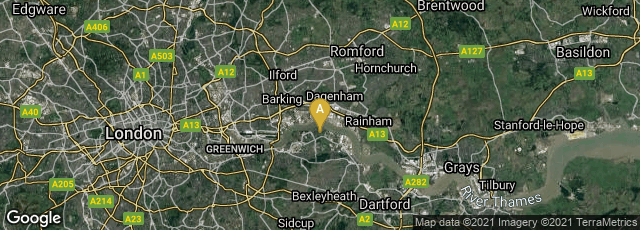Perhaps the most elegantly bound and most tastefully illustrated of all of Charles Knight's many publications was his 3-volume edition of
Edward William Lane's translation of
The Thousand and One Nights, Commonly Called, in England, the Arabian Nights' Entertainments. A new translation from the Arabic, with copious notes. Illustrated by many hundred engravings on wood, from original designs by William Harvey.
This was the first edition of Lane's translation. One of the earliest translations into English, Lane's translation "reigned as the leading English translation of the Nights for decades, and its copious notes are stimulating micro-essays of enduring value" (ODNB). The more than 600 illustrations in the three volumes, were provided by a team of engravers under the supervision of the wood-engraver
William Harvey, "one of Thomas Bewick's favourite pupils" (ODNB). Harvey "collaborated very closely with Lane in preparing his drawings and drew heavily on his collection of Oriental costumes and household articles for the purpose", with the result that, "Harvey's illustrations had a considerable share in the popularity of the work" (Percy Muir,
Victorian Illustrated Books [1985] 30-31). Because of the large number of images in the set Harvey employed a team of engravers to produce the wood-engravings after his drawings. In most instances the engravings are signed by the individual artists, often in letters that require magnification to read. The 600-plus illustrations for the work are considered one of Harvey's masterpieces.
"Two main Arabic manuscript traditions of the Nights are known: the Syrian and the Egyptian. The Syrian tradition is primarily represented by the earliest extensive manuscript of the Nights, a fourteenth- or fifteenth-century Syrian manuscript now known as the Galland Manuscript. It and surviving copies of it are much shorter and include fewer tales than the Egyptian tradition....Texts of the Egyptian tradition emerge later and contain many more tales of much more varied content; a much larger number of originally independent tales have been incorporated into the collection over the centuries, most of them after the Galland manuscript was written, and were being included as late as in the 18th and 19th centuries" (Wikipedia article on One Thousand One Nights, accessed 11-2021).
An Egyptologist and noted scholar of Arabic language and literature, Lane translated from the Egyptian manuscripts, becoming the first English translator to work from a primary source. He chose to bowdlerize portions of the tales he found "objectionable, "but added extensive anthropological and cultural annotations as well as explanations of many of his choices in translation and transliteration."
Like many of Knight's publications, Lane's work was originally issued in monthly fascicules from 1839 to 1840. The first two volumes of the set were printed by Whitehead & Co; the third volume was printed by Wm Clowes, the large industrial book printer who printed most of Charles Knight's books. Once the printing of the three volumes was complete, Knight had the first edition in book form issued in these very distinctive volumes bound in blue-green cloth, with the titles in Arabic at the foot of the spines. It is likely that these were the first cloth edition bindings produced in England with their titles in Arabic. For my extensive collection of Charles Knight's publications I was able to obtain a set of the first edition in the original publisher's bindings that is essentially mint as originally issued. The second printing Knight chose to have bound in an unusual bright red cloth. Presumably that printing was smaller than the first printing since copies in the red cloth bindings are more unusual on the market than those of the first printing. Wm Clowes printed the first and third volumes of the second printing, while Whitehead printed the second volume. All three volumes of the second printing were dated 1841, but other than the very distinctive red cloth bindings, and the dates on the title pages of volumes 1 & 2, there is no indication in the volumes that they are reprints.
